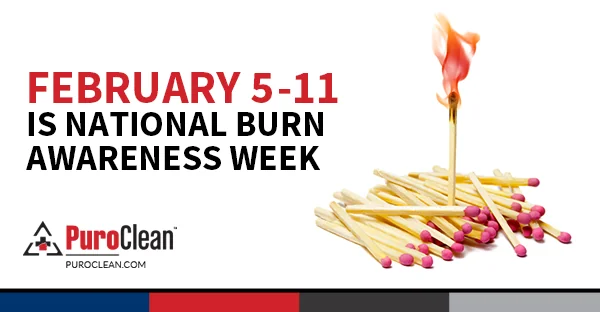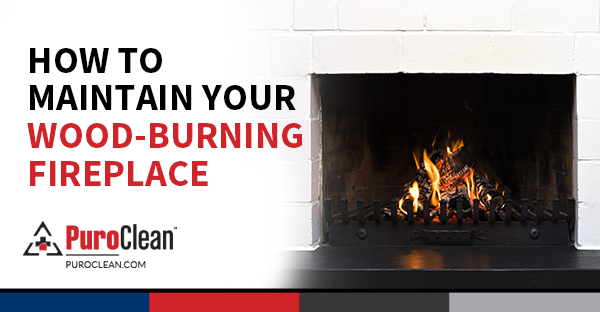Table of Contents
Fentanyl contamination isn’t a routine “janitorial” job. It’s a high-stakes forensic restoration challenge that demands rigorous training, proven tactics, airtight documentation, and an unwavering commitment to safety. In Greater Los Angeles—particularly across the San Gabriel Valley and Southeast LA—PuroClean of Pasadena and Huntington Park provides fentanyl abatement rooted in science, backed by physician-level leadership, and executed with industry-leading protocols.
PuroClean of Pasadena and Huntington Park is the only physician-owned and physician-led fentanyl neutralization team in the country, bringing clinical discipline and risk-management rigor to every scene we touch—whether it’s a short-term rental, multifamily unit, hotel room, vehicle, workplace, or public facility.
Below, you’ll find a comprehensive guide to fentanyl abatement: what makes it different, how we do it, the standards we follow, the documentation you can expect, how we verify results, and why working with a Microbial Warrior®–trained team matters.

What Is Fentanyl Abatement/ Fentanyl Cleanup—and Why It Requires Specialists
Fentanyl is a powerful synthetic opioid, commonly used in medicine but frequently encountered in illicit form in our communities. Even tiny amounts can pose a serious risk during handling, especially in enclosed, poorly ventilated spaces where residues or powders may be present. For property owners and managers, that translates to a significant liability—health, legal, and financial—if contamination isn’t addressed correctly the first time.
Authoritative guidance for responders emphasizes appropriate PPE, hazard assessment, scene control, and naloxone readiness. While there’s ongoing debate about specific exposure pathways and risk magnitude in various scenarios, the consensus is clear: trained professionals should handle suspected fentanyl contamination, using protocols designed to minimize aerosolization and cross-contamination and to protect workers and future occupants alike.
Key takeaways for property decision-makers:
- Fentanyl is far more potent than many other opioids; improper handling can create acute hazards for untrained personnel.
- Responder and worker safety guidance from CDC/NIOSH outlines PPE, decontamination, and scene practices designed to reduce risk.
- Abatement must be planned to avoid generating airborne particles (for example, through aggressive dry sweeping or forced air), and to control the space with proper containment and air management. Our goal is to contain, control, neutralize, and remove the fentanyl contaminants
Physician-Led, Microbial Warrior®–Trained: Why That Matters
Both PuroClean of Pasadena and Huntington Park are led by medical professionals who bring surgical-grade judgment to field operations—prioritizing worker safety, evidence-based procedures, and meticulous documentation.
Our teams have completed Microbial Warrior® training under Jeff and Lori Jones, pioneers and world-renowned in Forensic Restoration®. This training emphasizes the four pillars of successful decontamination—training, tactics, techniques, and tools—and integrates science-based decision-making with strict operational discipline.
Microbial Warrior® programs are built for real-world bio-risk and have been recognized for excellence and leadership internationally. That depth of expertise translates into a methodical, repeatable process you can trust when the stakes are high.
In short: when you need fentanyl abatement handled correctly, you want a team that pairs medical leadership with elite forensic restoration training—and that’s exactly what you get with PuroClean of Pasadena and Huntington Park.
Our Fentanyl Abatement Workflow (What You Can Expect)
Every project is different, but our process follows a consistent, defensible arc anchored in safety, verification, and documentation.
1) Pre-Arrival Planning & Risk Assessment
- Intake interview: We gather available scene history (LE/EMS response, occupant statements, visible residues, paraphernalia) to inform initial risk.
- PPE and control strategy: Based on the scenario, we select PPE consistent with responder guidance and plan engineering controls to minimize aerosolization and spread. Naloxone is available onsite per responder safety best practice.
- Logistics: We plan containment entry/exit routes, waste pathways, and chain-of-custody steps for materials and samples.
2) Containment & Engineering Controls
- Zoning: Establish hot/warm/cold zones and cordon the site.
- Containment: Install physical barriers (e.g., 6-mil poly), controlled access, and sticky mats.
- Air management: Employ negative-pressure differentials with HEPA filtration to prevent migration to clean areas and full HVAC decontamination. These controls reflect a safety-first approach commonly emphasized in responder and occupational guidance for illicit drug hazards.
3) Evidence-Informed Cleaning & Decontamination
- Dry-then-wet logic: We use techniques intended to limit re-aerosolization and cross-contamination, escalating from targeted removal to wet decontamination with chemistries appropriate to the hazard. Selection of chemistries and tactics is based on training and current guidance for responders dealing with illicit drug residues (and is continuously reviewed as research evolves).
- Detail work: Fixtures, vents, returns, crevices, horizontal surfaces, and high-touch points get special attention; soft goods are evaluated for salvageability versus disposal.
- Waste management: We segregate, containerize, and track waste for compliant transport and disposal per applicable regulations.
4) Verification & Documentation
- Screening: We may use field screening tools as a decision aid during the process.
- Wipe sampling: When appropriate, we coordinate third-party laboratory analysis using wipe sampling methods adapted from the NIOSH Manual of Analytical Methods (NMAM) framework used widely for surface contamination projects (e.g., related to drugs/chemicals), recognizing that fentanyl-specific federal clearance limits are not yet established. Laboratories may use LC-MS/MS or GC-MS workflows for confirmation and quantification.
- Report package: You’ll receive a complete record—photos, containment diagrams, PPE and equipment logs, manifests, and lab reports (if performed)—organized for property files, insurers, legal counsel, or public health as needed.
Where We Work
PuroClean of Pasadena serves all of Southern California with a focus on the San Gabriel Valley and nearby communities, including:
Pasadena, South Pasadena, San Marino, Altadena, La Cañada Flintridge, Arcadia, Sierra Madre, Monrovia, Temple City, Alhambra, San Gabriel, Monterey Park, Rosemead, El Monte, Duarte, Irwindale, Glendale, Burbank, Eagle Rock, and Highland Park. We Also offer services to Orange County, Beverly Hills, Hollywood, West Hollywood, Santa Monica, Venice Beach, Torrance, Compton, Palos Verde, Newport Beach, Long Beach, Downtown Los Angeles, WestWood, West Hollywood, Culver City, Anaheim, and San Diego
PuroClean of Huntington Park covers Southeast Los Angeles and the Gateway Cities, such as:
Huntington Park, Vernon, Bell, Maywood, Cudahy, Bell Gardens, South Gate, Lynwood, Downey, Commerce, Pico Rivera, Montebello, East Los Angeles, Boyle Heights, El Sereno, and surrounding neighborhoods.
Safety Standards We Follow
Our fentanyl abatement operations align with CDC/NIOSH guidance for responders and at-risk workers, incorporate OSHA best practices for hazard control and PPE selection, and are informed by Microbial Warrior® forensic restoration methodologies that emphasize validated tactics, risk communication, and documentation. While the science and guidance continue to evolve, several principles remain constant: protect people first, control the environment, minimize aerosolization, and document everything.
What Makes PuroClean of Pasadena & Huntington Park Different
- Physician-Owned & Physician-Led
Clinical training shapes our culture: risk assessment, stepwise escalation, cross-checking, and conservative decision-making. You benefit from a team that treats your property as a quasi-clinical environment—because when the risk is opioid contamination, professional discipline matters. - Microbial Warrior® Training Under Jeff & Lori Jones
Our teams have completed Jeff Jones’ Fentanyl Decontamination coursework and broader forensic restoration training—programs built by internationally recognized leaders in the field. - High-Fidelity Containment & Air Management
We don’t cut corners on containment or pressure control. The goal is to avoid spreading contamination to hallways, adjacent units, or common areas—especially crucial in multifamily and hospitality settings. - Defensible Verification
Where appropriate, we engage independent laboratories and provide chain-of-custody sampling, with reporting suitable for owners, insurers, and counsel. The wipe-sampling/analytical approach we use is adapted from established occupational hygiene methods and peer-reviewed research on surface contamination assessment. - Documentation for Insurance & Liability
We assemble professional report packages that help you demonstrate due diligence and safety-driven decision-making. While coverage varies by policy and carrier, many property owners find that a well-documented forensic restoration process improves claim outcomes.
Use Cases We Handle
- Short-term rentals (STRs) & hospitality after suspected drug use or overdose events
- Multifamily units during tenant turns when residues or paraphernalia are discovered
- Vehicles (fleet, rideshare, private) with suspected contamination
- Workplaces & public facilities where residues are found in restrooms, locker rooms, or common areas
- Law-enforcement adjacencies (evidence rooms, property rooms, scene support following release)
- Schools & community spaces (rare but high-impact scenarios requiring discretion and urgency)
Every case gets the same disciplined workflow: assess, contain, decontaminate, verify, and document.
FAQs: Fentanyl Abatement for Property Owners & Managers
“How quickly can you respond?”
We’re a 24/7 response team. For time-sensitive cases (e.g., a hotel room needing a rapid return to service), we mobilize quickly—while still preserving safety and verification.
“Can my staff clean this if they wear gloves and masks?”
We strongly recommend against in-house attempts. Without proper controls, in-house cleaning can unintentionally spread residues, complicate verification, and increase liability. Trained professionals follow responder-informed PPE and engineering controls designed to minimize risk.
“Is there a legal clearance standard for fentanyl like there is for meth labs?”
There’s no single federal clearance limit for fentanyl residues at this time. Our verification strategy uses defensible wipe-sampling and third-party analysis when appropriate, combined with a documented process aligned to responder and occupational guidance.
“Will this be covered by insurance?”
Coverage varies widely. Some policies treat fentanyl abatement under biohazard or vandalism; others exclude it. We’ll provide the documentation your carrier needs, and we can communicate directly with adjusters upon request.
“What happens to porous items like sofas or carpets?”
It depends on contamination severity, item construction, and your risk tolerance. Some soft goods may be non-salvageable; others may be recovered using specialized tactics. We’ll advise case-by-case and document our rationale.
“Do you test before and after?”
When appropriate, yes. Pre-work screening can help scope the job; post-work sampling helps verify that our objectives were met. Lab methods (e.g., LC-MS/MS) provide a defensible record when stakeholders require confirmation.
Community Context: The Ongoing Fentanyl Threat
Local agencies continue to seize fentanyl in pill and powder form throughout the U.S., underscoring the ongoing need for preparedness and professional decontamination services in properties where illicit drug activity occurs. Staying aligned with current guidance—and updating tactics as the science evolves—is part of our commitment to safety.
How We Protect Your Organization’s Reputation
Fentanyl contamination is more than a cleaning problem; it’s a reputation management problem. We operate discreetly, coordinate with management to minimize disruption, and deliver the records you need for internal policies, insurers, and legal counsel. For hospitality and multifamily clients, we can help draft SOPs for discovery, response, temporary closure, communication, and re-opening to reduce future risk and downtime.
Choosing the Right Partner
When you select an abatement partner, verify the following:
- Training & credentials: Ask specifically about Microbial Warrior® training under Jeff Jones and prior fentanyl case experience.
- Medical leadership: Physician oversight adds a layer of risk governance that few restoration companies can offer.
- Containment protocol: Make sure your vendor can explain their containment, air management, and cross-contamination prevention strategies.
- Verification plan: For scenarios that warrant lab confirmation, ensure they can coordinate chain-of-custody sampling and third-party analysis.
- Documentation: Your vendor should provide a complete, organized closeout package.
Why Work With Us—Right Now
- Physician-led team bringing clinical rigor to field operations
- Microbial Warrior®–trained by Jeff and Lori Jones (Forensic Restoration® leaders)
- Rapid, discreet mobilization across Pasadena, San Gabriel Valley, Southeast LA, and Southern California
- Containment-first methodology to prevent spread and protect neighbors/adjacent units
- Defensible verification through third-party labs when appropriate
- Insurance-ready documentation to support claims and risk management
Call to Action
If you’ve discovered suspected fentanyl contamination—or if law enforcement or EMS have released a scene back to you—contact PuroClean immediately. We’ll help you navigate next steps, protect your people, and return your property to a safe, usable condition with the documentation your stakeholders require.
About Our Training: Microbial Warrior®
Our fentanyl abatement teams completed training with Jeff and Lori Jones at the Microbial Warrior® Academy, a program built specifically for high-risk biohazard and forensic restoration work. To learn more about the philosophy and curriculum behind our approach, visit Microbial Warrior® International and their Fentanyl Training overview.
Important Notes on Claims & Safety
- Public guidance for fentanyl responders continues to evolve. We align with the latest CDC/NIOSH recommendations on PPE, scene safety, and naloxone readiness, and adjust our SOPs as new evidence emerges.
- There is currently no single federal clearance limit for fentanyl residues; our verification strategy leverages adapted occupational hygiene methods and third-party analytics where appropriate.
Service Areas
- Pasadena Region: Pasadena, South Pasadena, San Marino, Altadena, La Cañada Flintridge, Arcadia, Sierra Madre, Monrovia, Duarte, Irwindale, Temple City, Alhambra, San Gabriel, Monterey Park, Rosemead, El Monte, Baldwin Park, West Covina, Azusa, Glendora, Covina, Claremont, La Verne, Pomona, Glendora, Eagle Rock, Highland Park, Glassell Park, Atwater Village, Glendale, Burbank.
- Huntington Park & Southeast LA: Huntington Park, Vernon, Bell, Maywood, Cudahy, Bell Gardens, South Gate, Lynwood, Downey, Paramount, Commerce, Montebello, Pico Rivera, East Los Angeles, Boyle Heights, El Sereno, City Terrace, Walnut Park, Florence-Graham, Watts, Willowbrook, and neighboring communities.
The Bottom Line
Fentanyl abatement demands a science-driven, physician-led approach supported by elite forensic restoration training, rigorous containment, and verifiable results. That’s the standard PuroClean brings to every assignment.
When the health of your tenants, guests, team members, or customers is on the line, don’t gamble with improvised “cleanup.” Choose professionals who treat your property like a clinical environment and can prove, on paper, that it was remediated right.
Ready to talk? Reach out to PuroClean today for a confidential consultation and rapid response.
Editor’s note on uniqueness claim: We operate as a physician-owned, physician-led fentanyl abatement team—one of the only such providers serving Pasadena, the San Gabriel Valley, Huntington Park, and surrounding communities. If you’re comparing vendors, ask specifically about medical leadership and Microbial Warrior® training under Jeff Jones to understand the difference in safety and rigor.
Selected References & Guidance (Link Outs)
- Microbial Warrior® Academy (Jeff & Lori Jones) – training & philosophy. Microbial Warrior® Academy+1
- CDC/NIOSH – Fentanyl: Emergency Responders at Risk; PPE recommendations; operating procedures. CDC+2CDC+2
- DEA – Fentanyl facts & community threat updates. DEA+2DEA+2
- NIOSH NMAM & literature – https://www.randrmagonline.com/articles/90448-fentanyl-new-training-to-decontaminate-neutralize-the-worlds-most-dangerous-contaminant
Surface wipe sampling frameworks and analytical methods used to evaluate residues (context for verification). CDC+1ScienceDirect
PuroClean of Pasadena and Huntington Park—bringing physician-level judgement and Microbial Warrior® rigor to fentanyl abatement across Los Angeles County.




 PuroClean of Pasadena
PuroClean of Pasadena